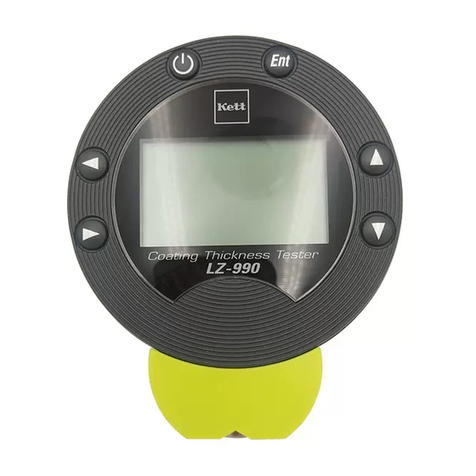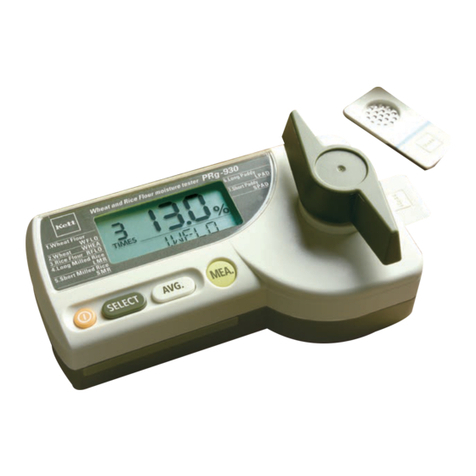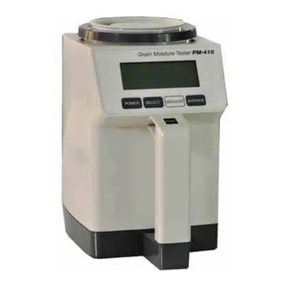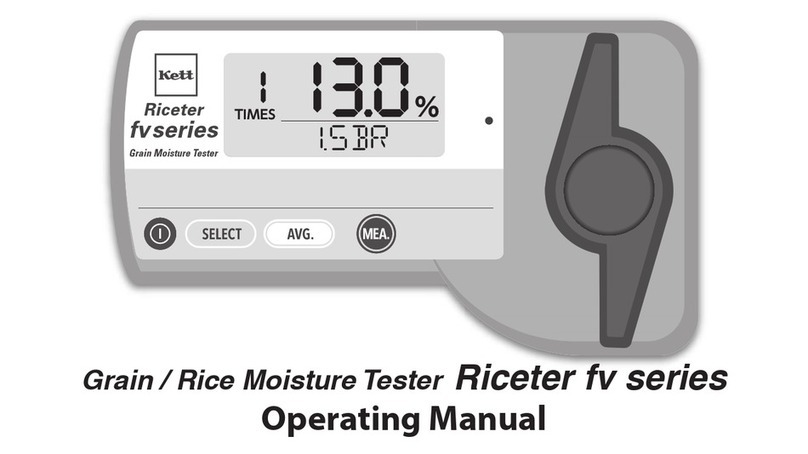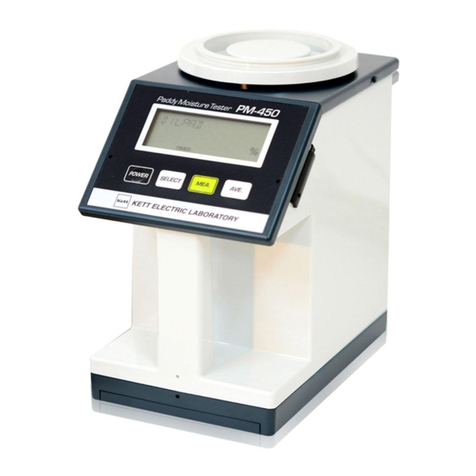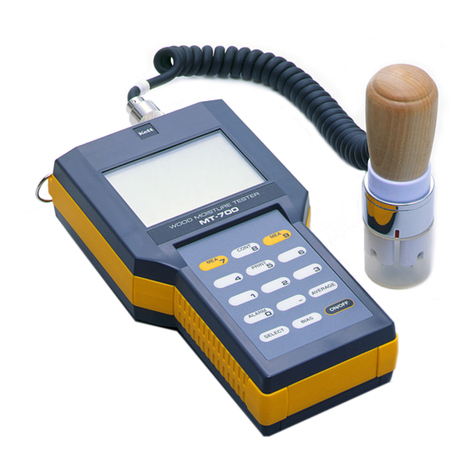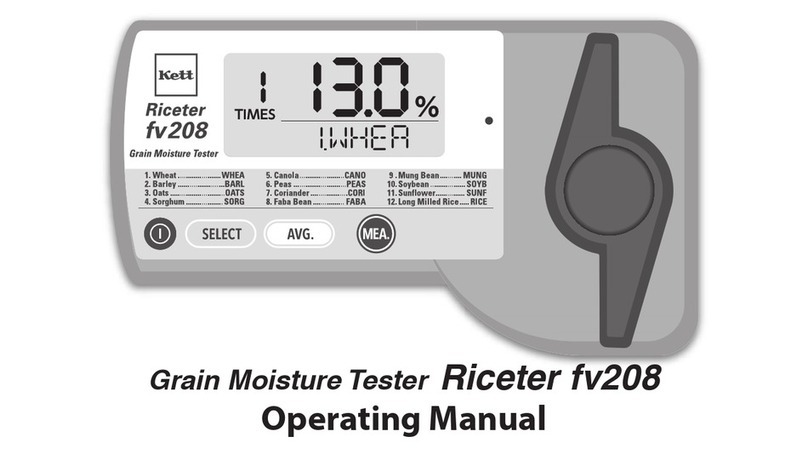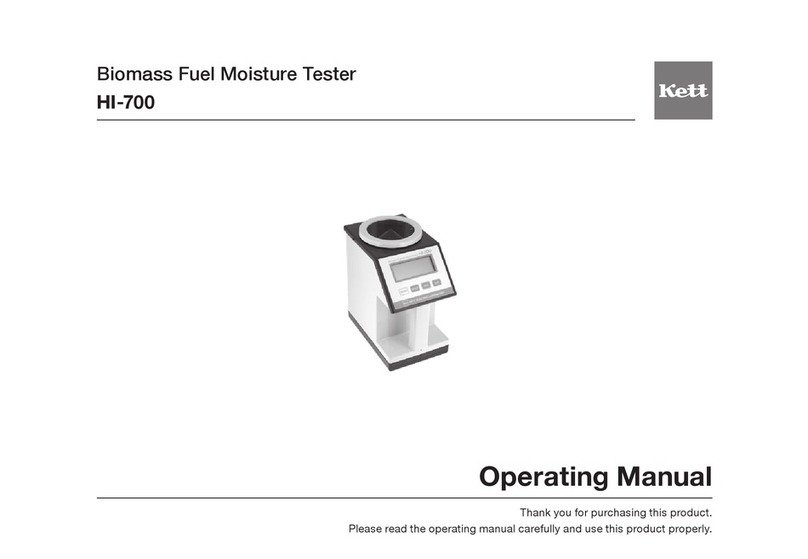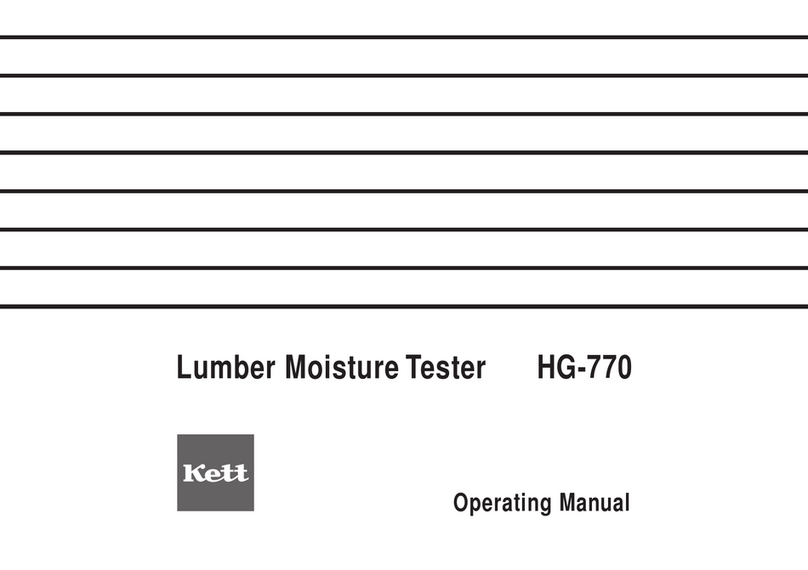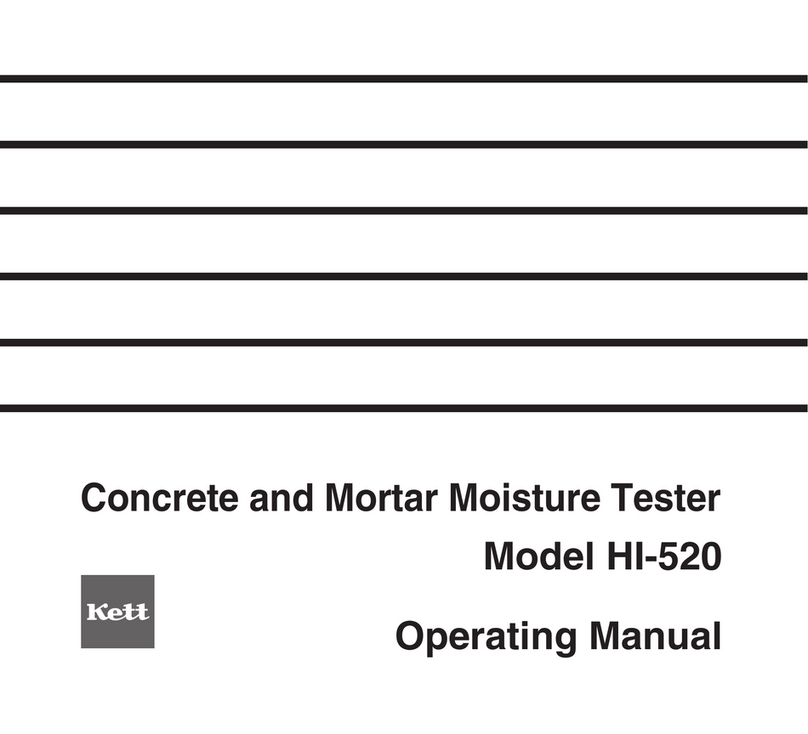
7
3. Specifications
Measurement Method : Near Infrared Transmittance
Light Source : Tungsten lamp (lamp life 20,000hrs)
Applications : Short Brown Rice, Short Milled Rice, H-Moist Short B.R., R.F.R-B.G.,
R.F.R-TWR, Long Brown Rice, Long Milled Rice
Constituents : Protein, Moisture, Amylose (reference value)
Sample Volume : Approx. 60mL
Calibration Memory : 4 constituents ×8 channels
Measurement Time : Approx. 40 sec
Operating Environment : 10~35℃(Non-condensation)
Display Format : 320 ×240 dot-matrix large-size LCD
Displays Content : Calibration settings / names, Protein, Moisture,
Amylose (reference value), Quality Evaluation Value (Q.E.V)
Power Source : AC100V~240V (50/60Hz)
Dimensions : 260(W) ×350(D) ×380(H)mm
Weight : 13kg
Accessories : Power cable 1pc
Sample case 1pc
Sampling cup 1pc
Fuse 1pc
Operation manual 1pc
Standard samples (Brown Rice, Milled Rice) 2pc. (per each)
Storage container for standard samples 1pc
Option : Printer model VZ-330 (100V/220V)
Note : AN-820 should be used below 35℃in environment condition. If the environment temperature is
over 50℃, the precision spectroscope would be damaged. And The AN-820 should be also stor-
aged below 50℃environment condition.
Note : Pre-calibration with recommended conditions are as below.
Display range Protein : 4 ~ 12%
Moisture : 10 ~ 20%
Amylose(Reference) : 10 ~ 40%
Recommnedation conditions : 15~30℃(Non-condensation)
Note : A backup battery has been built to this unit so that even if the electricity is cut-off, the calibration
in memory will not be lost. Please contact the service desk of our company regarding an replace of
backup battery.












